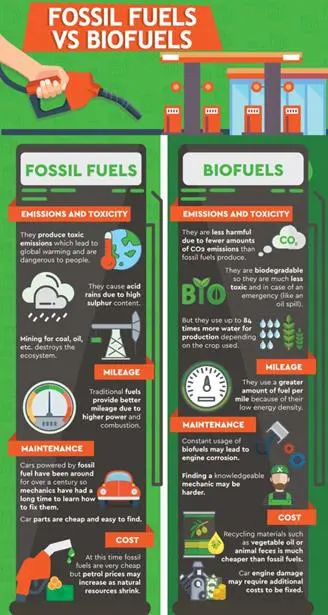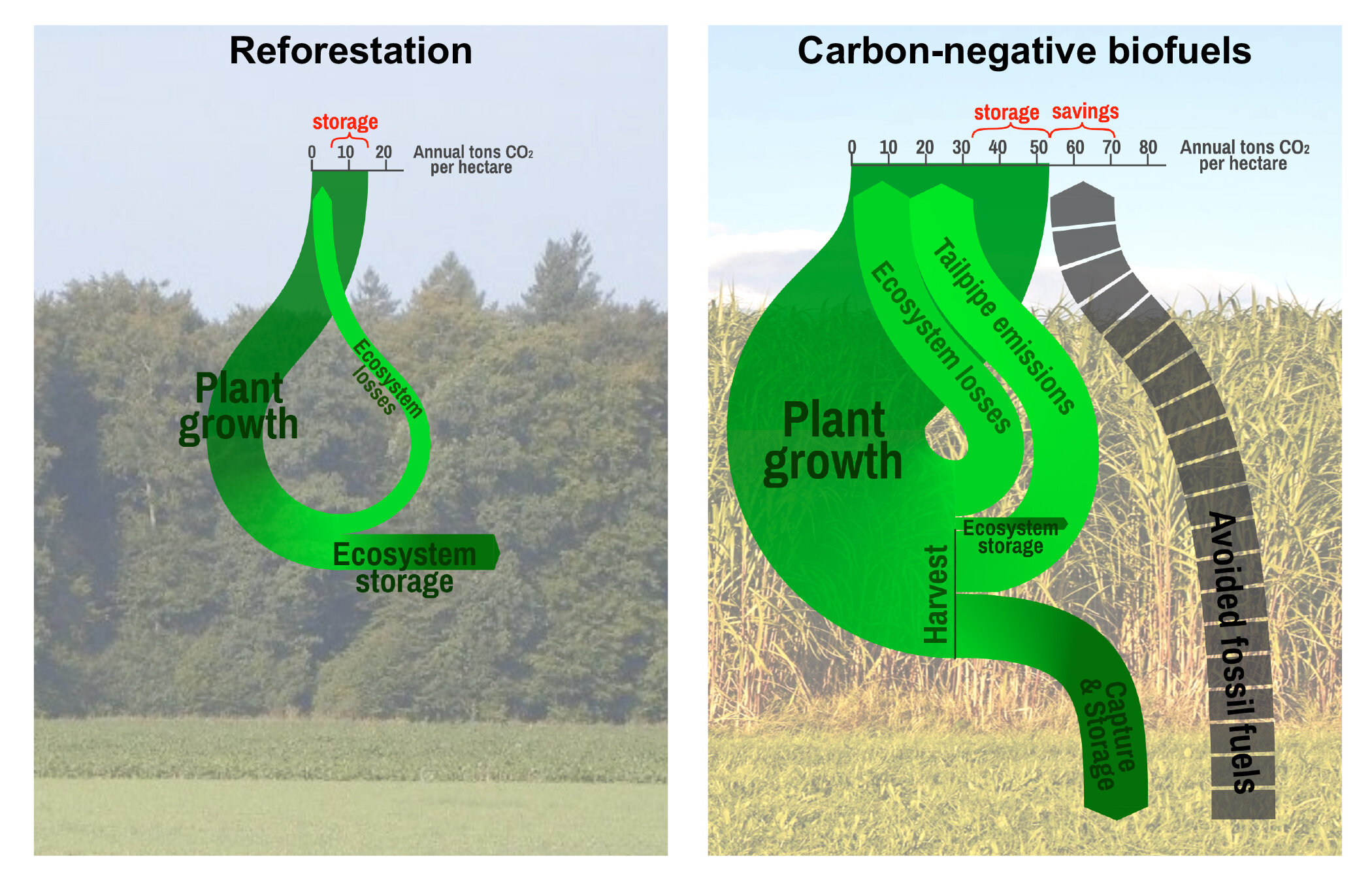Do fossil fuels include biodiesel? No! Plus we discuss alternative the fuels: Biodiesel vs. Fossil Fuels
Key Takeaways
- Biodiesel is made from renewable resources like plant oils and animal fats, unlike fossil fuels that come from ancient organic materials.
- Producing biodiesel involves a process called transesterification, which is different from the extraction and refinement processes used for fossil fuels.
- Biodiesel emits fewer pollutants, reducing greenhouse gases by up to 75% compared to traditional diesel.
- While biodiesel is renewable, it can compete with food production and require significant land use.
- Fossil fuels remain dominant due to established infrastructure and lower production costs, but they contribute significantly to climate change.
Is Biodiesel a Fossil Fuel? Biodiesel vs Fossil Fuel Comparison
Most importantly, let’s clear up a common misconception: biodiesel is not a fossil fuel. While both biodiesel and fossil fuels are used for energy, they come from very different sources and have distinct impacts on the environment. Fossil fuels, like coal, oil, and natural gas, are derived from ancient organic matter that has been subjected to heat and pressure over millions of years. In contrast, biodiesel is produced from contemporary organic materials, such as vegetable oils and animal fats, making it a renewable energy source.

“Biofuels vs Fossil Fuels Unit | Great …” from www.glbrc.org and used with no modifications.
What Biodiesel Is Compared to Fossil Fuels
Understanding the differences between biodiesel and fossil fuels begins with their origins. Biodiesel is part of a larger family of biofuels, which are derived from biomass. This means they come from living or recently living organisms, such as plants and animals. On the other hand, fossil fuels are the result of a long process of organic decomposition, buried beneath the earth for millions of years. This fundamental difference in origin leads to a variety of implications for their use and impact on the planet.
Besides that, biodiesel can be used in existing diesel engines without modifications, offering a practical alternative to fossil fuels. It is often blended with petroleum diesel to enhance performance and reduce emissions. In contrast, fossil fuels are more versatile in their applications but have a higher environmental cost.
- Biodiesel is renewable and can be produced locally, reducing dependency on imported fuels.
- Fossil fuels are finite and contribute significantly to greenhouse gas emissions.
- Blending biodiesel with petroleum diesel can help transition to cleaner energy.
Primary Raw Materials
The primary raw materials for biodiesel production include vegetable oils, such as soybean and canola oil, as well as animal fats and recycled cooking grease. These materials are readily available and can be sourced sustainably. This contrasts sharply with fossil fuels, which require extensive extraction processes and are subject to geopolitical and market fluctuations.

“biofuel and fossil fuels …” from www.researchgate.net and used with no modifications.
Production Processes and Methods
Producing biodiesel involves a chemical process known as transesterification. This process converts fats and oils into fatty acid methyl esters (FAME), the chemical name for biodiesel, by reacting them with an alcohol like methanol in the presence of a catalyst. This method is relatively straightforward and can be scaled to meet local demands.
Environmental Implications and Impact
Environmental implications are a critical consideration when comparing biodiesel and fossil fuels. Biodiesel combustion results in significantly lower emissions of pollutants such as carbon monoxide, particulate matter, and hydrocarbons. Most importantly, it can reduce carbon dioxide emissions by up to 75% compared to conventional diesel, making it a cleaner option.
However, the production of biodiesel is not without its challenges. It requires land and resources that might otherwise be used for food production, potentially impacting food prices and availability. In contrast, fossil fuels, while more polluting, do not compete directly with food resources but contribute heavily to global warming and environmental degradation.
Efficiency and Performance Differences
Efficiency and performance are crucial when considering energy sources. Biodiesel provides similar energy content to petroleum diesel, making it an effective alternative. However, it has a slightly higher viscosity and can gel at lower temperatures, which might require engine modifications or blending with petroleum diesel in colder climates.
Fossil fuels, on the other hand, have been optimized over decades for performance and efficiency, benefiting from a well-established infrastructure. This makes them the go-to choice for many industries, despite their environmental drawbacks.
- Biodiesel has a similar energy content to diesel but may require blending in cold climates.
- Fossil fuels offer high energy efficiency but at a greater environmental cost.
Understanding these differences is key to promoting biodiesel as a viable alternative to fossil fuels. By addressing these challenges, we can work towards a more sustainable energy future.
Potential for Waste Reduction through Recycling
One of the standout benefits of biodiesel is its ability to utilize waste products effectively. Used cooking oils and animal fats, often discarded as waste, can be recycled into biodiesel. This not only reduces the environmental burden of waste disposal but also provides an additional source of raw materials for biodiesel production.
By turning waste into fuel, biodiesel production can contribute to a circular economy, where resources are reused and recycled, minimizing waste and maximizing resource efficiency. This approach can significantly reduce the environmental footprint associated with waste management and fossil fuel production.

“Oponeo.co …” from www.oponeo.co.uk and used with no modifications.
Challenges and Drawbacks of Biodiesel
While biodiesel offers numerous advantages, it is not without its challenges. To fully understand its role in the energy landscape, we must consider these potential drawbacks.
Land Use and Resource Competition
Biodiesel production requires agricultural land to grow feedstock crops like soybeans and canola. This can lead to competition with food production, driving up food prices and potentially leading to food shortages. Additionally, converting natural habitats into agricultural land for biofuel production can have detrimental effects on biodiversity.
Production Limitations and Scalability
The scalability of biodiesel production is another concern. While small-scale production is feasible, scaling up to meet global energy demands poses challenges. It requires significant investment in infrastructure and technology to increase production capacity while maintaining sustainability.
Possible Engine Changes and Compatibility Issues
Although biodiesel can be used in existing diesel engines, there are compatibility issues to consider. Pure biodiesel (B100) can cause engine wear and damage over time if not used correctly. This means that in colder climates, biodiesel may need to be blended with petroleum diesel to prevent gelling and ensure optimal engine performance.
The Dominance of Fossil Fuels
Despite the benefits of biodiesel, fossil fuels continue to dominate the global energy market. Their historical context, established infrastructure, and economic factors contribute to their persistent use.
Historical Context and Abundance
Fossil fuels have been the backbone of industrial development since the Industrial Revolution. Their abundance and high energy density have made them the preferred choice for energy production, transportation, and industrial processes. This historical reliance has created a deeply entrenched system that is difficult to change overnight.
Infrastructure and Global Distribution
The global infrastructure for fossil fuels is extensive and well-developed. Pipelines, refineries, and distribution networks are designed to handle fossil fuel products efficiently and cost-effectively. This infrastructure provides a level of convenience and reliability that alternative fuels like biodiesel are still working to achieve.
Economic Factors: Costs and Investments
Fossil fuels benefit from economies of scale, making them relatively inexpensive to produce and distribute. The existing investments in fossil fuel infrastructure and technology have resulted in lower costs per unit of energy compared to biodiesel. This economic advantage is a significant barrier to the widespread adoption of alternative fuels.
However, these economic benefits come at a cost to the environment and public health, as fossil fuels are major contributors to air pollution and climate change.

“Fossil Fuels // HSC Chemistry …” from www.youtube.com and used with no modifications.
Environmental Costs and Climate Impact
The environmental costs of fossil fuels are substantial. Burning fossil fuels releases large quantities of greenhouse gases, contributing to global warming and climate change. This has led to more frequent and severe weather events, rising sea levels, and other environmental challenges. To understand more about the impact of fossil fuels compared to biofuels, you can read this comparison on HowStuffWorks.
Transitioning to biodiesel and other renewable energy sources is crucial to mitigating these impacts. By reducing our reliance on fossil fuels, we can move towards a more sustainable and environmentally friendly energy future.
Future Outlook and Sustainability Considerations
As we look towards the future, the role of biodiesel in our energy landscape becomes increasingly significant. The push for renewable energy sources is stronger than ever, driven by the urgent need to address climate change and reduce greenhouse gas emissions. Biodiesel, with its renewable nature and lower emissions, stands as a promising alternative to fossil fuels.
Potential for Biodiesel Expansion
The potential for expanding biodiesel production is substantial. Advances in agricultural technology and crop management can increase the yield of biofuel crops without compromising food production. Additionally, innovations in waste oil recycling can provide alternative feedstocks, further supporting biodiesel’s scalability.
Policy and Technological Innovations
Government policies play a crucial role in promoting biodiesel adoption. Incentives for renewable energy production, such as tax credits and subsidies, can make biodiesel more competitive with fossil fuels. Technological innovations, like improving biodiesel production processes and engine compatibility, are also essential to overcoming current limitations.
Balancing Renewable Energy Development
Balancing the development of biodiesel with other renewable energy sources is key to a sustainable energy future. Solar, wind, and other biofuels should complement biodiesel, creating a diverse energy portfolio that reduces dependency on any single source. This approach ensures energy security and sustainability while addressing environmental concerns.

“fossil fuels” from phys.org and used with no modifications.
Frequently Asked Questions (FAQ)
In this section, we’ll address some common questions about biodiesel and its role compared to fossil fuels.
Is biodiesel as efficient as regular fossil fuels?
Biodiesel has a similar energy content to petroleum diesel, making it an efficient alternative. However, it can have slightly higher viscosity and different cold weather properties, which might affect engine performance without proper adjustments or blending.
Can any diesel vehicle run on biodiesel?
Yes, most diesel engines can run on biodiesel blends without modification. However, using pure biodiesel (B100) might require engine adjustments, especially in colder climates. Always consult your vehicle’s manufacturer guidelines before switching fuels.
For example, many city buses and government fleets have successfully transitioned to using biodiesel blends, demonstrating its viability as a fuel source.
“Many city buses and government fleets have successfully transitioned to using biodiesel blends, demonstrating its viability as a fuel source.”
It’s important to note that while biodiesel is generally compatible with diesel engines, some older engines may require modifications or additional maintenance to handle the different fuel properties.
How is the price of biodiesel compared to gasoline or diesel?
The cost of biodiesel can vary depending on the feedstock and production scale. Generally, it is slightly more expensive than petroleum diesel due to smaller production volumes and higher raw material costs. However, government incentives and the environmental benefits of reduced emissions can offset these costs.
What are the environmental benefits of using biodiesel?
Biodiesel offers several environmental benefits, including significantly lower emissions of carbon monoxide, particulate matter, and hydrocarbons. It can reduce greenhouse gas emissions by up to 75% compared to conventional diesel, contributing to cleaner air and a healthier environment.
What are the main challenges facing biodiesel adoption?
Despite its benefits, biodiesel faces challenges such as competition with food production, scalability issues, and infrastructure limitations. Addressing these challenges requires coordinated efforts from governments, industry, and consumers to support research, development, and infrastructure investment.
By understanding these challenges and working towards solutions, we can promote biodiesel as a key component of a sustainable energy future. Transitioning from fossil fuels to biodiesel and other renewable energy sources is not just an environmental imperative but also an opportunity to create a more resilient and sustainable energy system for future generations.
Biodiesel is often compared to traditional fossil fuels, but it’s important to understand the key differences between these two energy sources. Biodiesel is a renewable energy source made from natural oils, such as vegetable oil or animal fat, and it can significantly reduce greenhouse gas emissions. In contrast, fossil fuels are non-renewable and contribute to environmental pollution. For more information on the differences between these energy sources, you can explore the difference between fossil fuel and biofuel.
How to Reduce Food Waste Globally
Reducing global food waste involves prevention, redistribution, and recycling. Strategies include meal planning, better harvesting, and donating leftovers. Governments must support policies and raise awareness. With one-third of food wasted annually, the economic loss hits $940 billion. Simple household actions can make a significant impact on this challenge…
Incorporating Solar Energy Integration with Anaerobic Digestion
Integrating solar energy with anaerobic digestion enhances biogas production by using solar thermal collectors and photovoltaic panels. This synergy not only decreases biogas dependency by 65% but also produces energy consistently, proving especially advantageous in remote locations with competitive energy costs of $0.045/kWh…
10 Ways to Reduce Waste at Home
Reducing household waste can cut your carbon footprint by up to 42%. Start with simple changes: meal planning, reusable alternatives, effective recycling, and composting. Small, consistent adjustments save money and reduce landfill contributions. Embrace sustainable habits for a healthier home environment…
River Rocks in Aquariums: Sourcing Material to Create Enchanting Aquatic Rockscapes
Discover the art of incorporating river rocks in aquariums for a stunning and natural environment that benefits aquatic life. Find, clean, and arrange rocks with finesse. Read on if you are sourcing the material you need for your enchanting aquatic rockscapes. The Importance of Rocks in Aquariums When it comes to setting up an aquarium, […]







